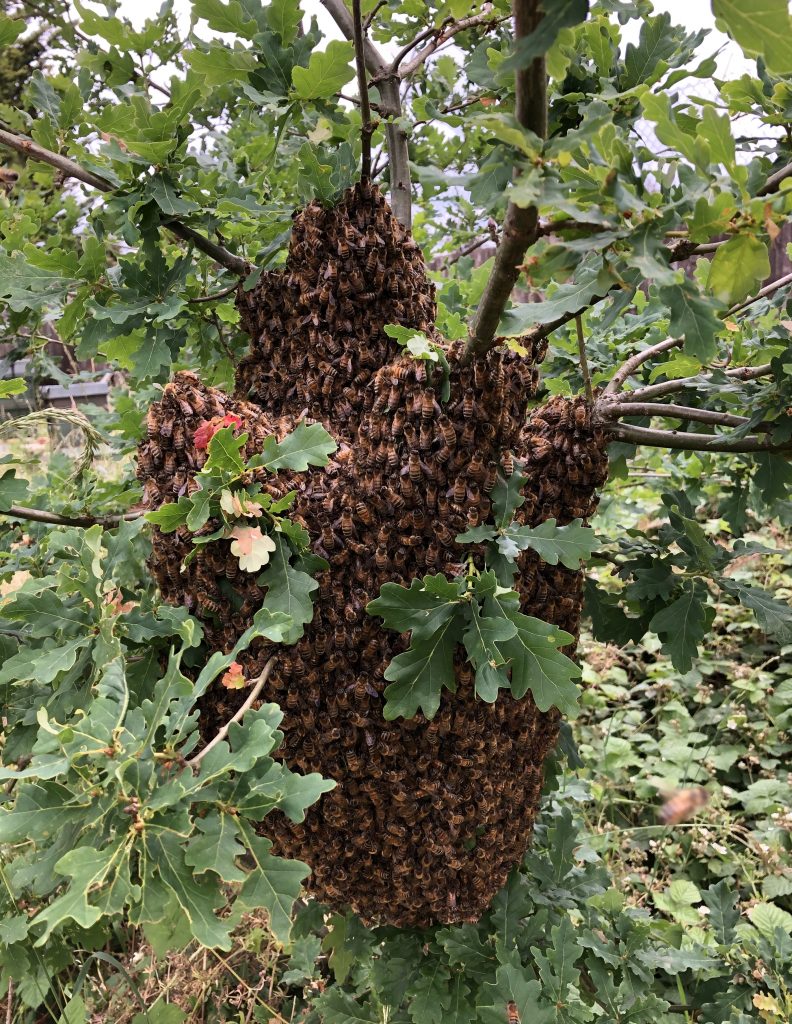Swarms

SWARM REMOVAL
If you have a swarm of bees you would like removed, the British Beekeepers Association have an informative website with a page dedicated to swarms and swarm collection. By clicking on the British Beekeepers Association link above and entering your postcode on their web page, you will be put in contact with your nearest volunteer beekeeper who is willing to collect. There is usually no charge for this service but some beekeepers may ask for a donation either for their local association or for a small contribution towards travel expenses.
Swarming is a natural process in the life of a honeybee colony. Swarming occurs when a large group of honeybees leaves an established colony, essentially creating two from one. Swarming is a natural method of propagation to continue the species.
A swarm of bees can contain around 20,000 bees. The bees have feasted on honey before swarming and are generally docile and harmless, but it’s best not to approach a swarm as they will still be defensive (they are protecting their queen) and will sting if they feel threatened.
The swarm will settle in a temporary resting place like the tree above and the video clip below, but they are known to chose unusual places, the door handle of a shop, a lamppost, bicycle handlebar, and even a car side mirror!
These are only temporary sites whilst ‘scout’ bees search for a suitable permanent place to build their new home. This can take 2-3 days, and gives a beekeeper the opportunity to remove the swarm and place it in an empty beehive.
The video clip below is of one of our colonies in the process of swarming. About 20,000 bees are eagerly exiting the entrance at the bottom of the hive.
About 10 minutes after the above swarm left the hive, the bees decided to return to the hive. This is extremely unusual, but was very likely because the queen did not depart with the swarm. The bees therefore returned to the same hive to be with the queen. See the video below to watch the bees queuing up on the front of the hive waiting to return inside.